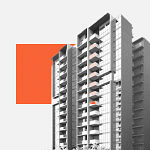[SINGAPORE] Population and business growth help drive economic growth. Despite its small land mass, with forward planning, Singapore can comfortably house more people and business activities.
Inclusive, accessible homes and neighbourhoods as well as refreshed business nodes and vibrant workspaces – these are part of the Urban Redevelopment Authority’s (URA) Draft Master Plan 2025 (DMP 2025), which sets out Singapore’s land-use blueprint for the next 10 to 15 years.
On the housing front, we can expect new prime private homes to be built in the Newton and Paterson areas near Orchard Road. More housing will also come up in the Dover-Medway neighbourhood along Dover Road, at the former Singapore Racecourse in Kranji, the Sembawang Shipyard area and the Paya Lebar Air Base, among others.
On the workspace front, new office buildings are planned in Bishan, while new-generation, mixed-use industrial spaces are envisaged in Woodlands Gateway.
Plans are also being worked on to develop the 39 hectares of the former Jurong Bird Park and Jurong Hill into a workspace of the future.
Crucially, Singapore’s urban plans do not just provide for sufficient physical space to house a larger population and for business expansion. They also address the risks posed by climate change, as well as help steward nature and heritage – all of which can enhance the value of physical properties here.
A NEWSLETTER FOR YOU

Tuesday, 12 pm
Property Insights
Get an exclusive analysis of real estate and property news in Singapore and beyond.
Think of how efforts to design a cooler and more comfortable urban environment can result in a Singapore that is still liveable even as the mean temperature rises, or how plans that are being advanced for “Long Island” – an integrated urban solution along the East Coast – help address the threat of rising sea levels.
A greener city with more than 25 new parks to be completed between 2025 and 2030, and the addition of over 50 km of park connectors will improve the public realm and add value to homes islandwide.
More efforts to conserve buildings such as the former Pasir Panjang English School and buildings at Bukit Timah Turf City will help anchor Singaporeans to home amid an ever-changing cityscape.
The Republic’s urban planning is internationally acclaimed. Many countries seek to learn from our urban planners.
Kudos to the URA for its meticulous work in coming up with DMP 2025, including engaging with close to 220,000 people whose feedback helped shape a more holistic plan.
Role of developers
Still, Singapore’s continued urban transformation depends to a large extent on the active participation of private property developers.
Property development is hardly for the faint-hearted, especially with the high land costs and generally thin projected profit margins here.
A wrong call is financially painful, especially as property development projects are often largely debt-funded.
As the economy here slows and the global economic outlook weakens amid trade as well as geopolitical tensions, many businesses including property developers could be heading for a rough ride.
Will developers stomach the risks to build the new homes, spaces for work and so forth that are planned in DMP 2025?
Perhaps, with heightened economic uncertainty, the government can be more flexible in awarding state land tender sites and minimise instances of not awarding sites because the top bid is deemed to be too low.
Certainly, the Central Business District Incentive and Strategic Development Incentive schemes help encourage the redevelopment of older buildings in the city centre, which in turn strengthens Singapore’s position as a global financial hub.
However, there may be scope to lower land betterment charge (LBC) rates to spur the redevelopment of buildings. The LBC is a tax on the increase in the value of land arising from a chargeable consent, such as planning permission given in relation to the development of any land.
In addition, the authorities could consider giving developers greater flexibility to sell out their housing inventory before being slapped with hefty taxes.
Might Additional Buyer’s Stamp Duty (ABSD) on locals buying multiple homes and foreigners who are not permanent residents (PRs) buying homes be relaxed, to give developers more confidence to build condominiums in prime areas including Paterson?
In short, policy tweaks that make life easier for property developers may be timely, given the heightened economic and business uncertainty.
End-user demand
While property developers play a crucial role in Singapore’s urban transformation, they are generally led by end-user demand.
With a tougher economic outlook and some countries turning more inward-looking, the city-state faces a tough battle to grow as a trading hub and draw foreign investment.
Also, while many pro-family policies are in place and these could become more generous over time, the challenge of raising the birth rate substantially remains formidable.
Nonetheless, Singapore is attractive to talented migrants given the high standard of living here. Indeed, more talent may seek to come here as various developed countries turn increasingly hostile to migrants.
Being open to skilled migrants will enhance the Republic’s appeal to businesses. Skilled migrants may also help grow new businesses here. And having more foreign nationals become Singapore citizens or PRs will drive private-housing demand, as citizens and PRs buying first homes enjoy favourable ABSD treatment versus other buyer profiles.
As Singapore, a country built by migrants, turns 60, the key to continued urban transformation and ultimately economic success likely lies in continuing to attract and assimilate talent from everywhere.
Should end-user demand be robust, property developers will voraciously buy land and confidently build projects with hefty price tags. The work of developers and others in the built environment will then lead to new buildings being completed that help bring to reality what is envisaged in DMP 2025.


